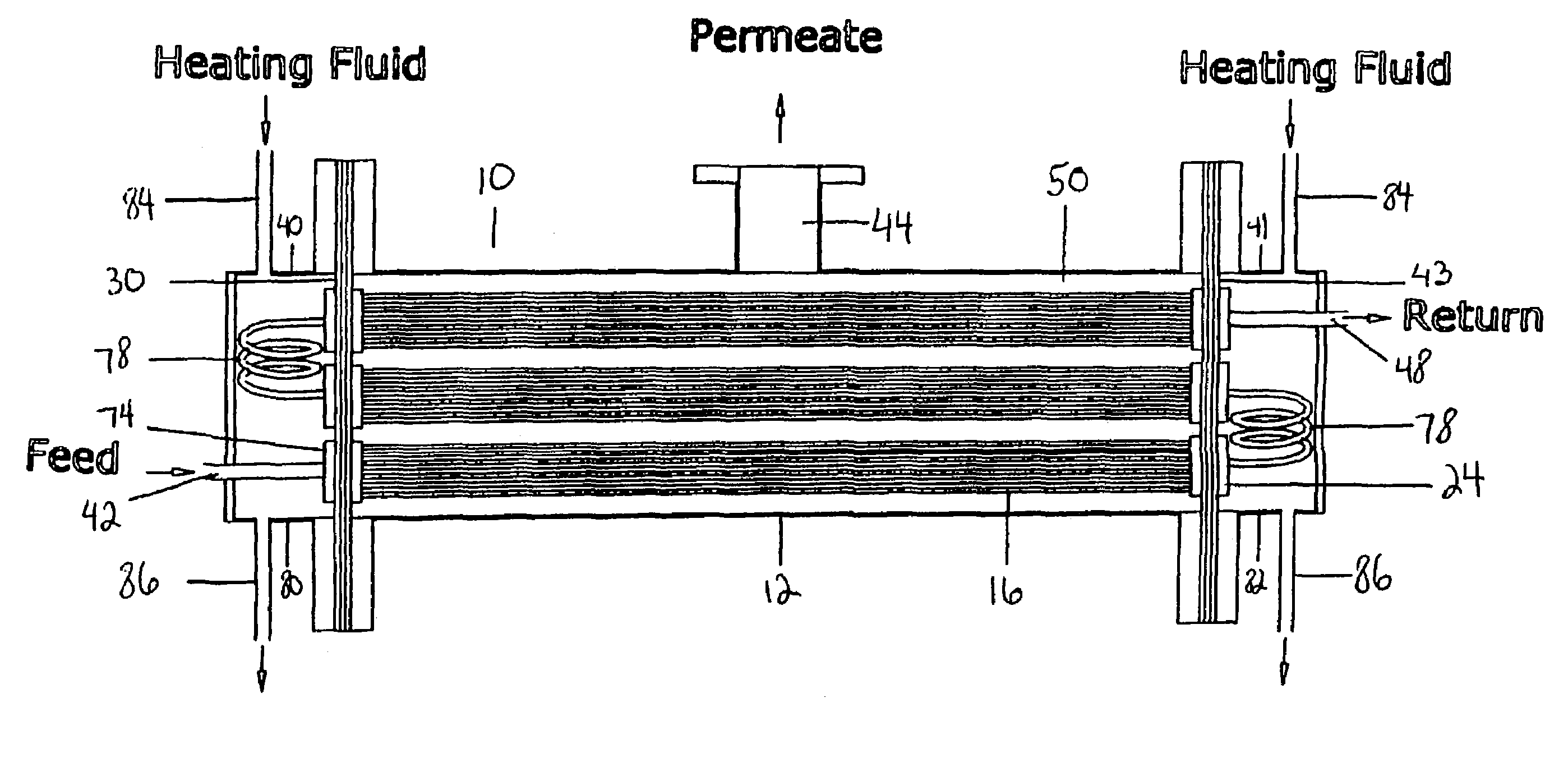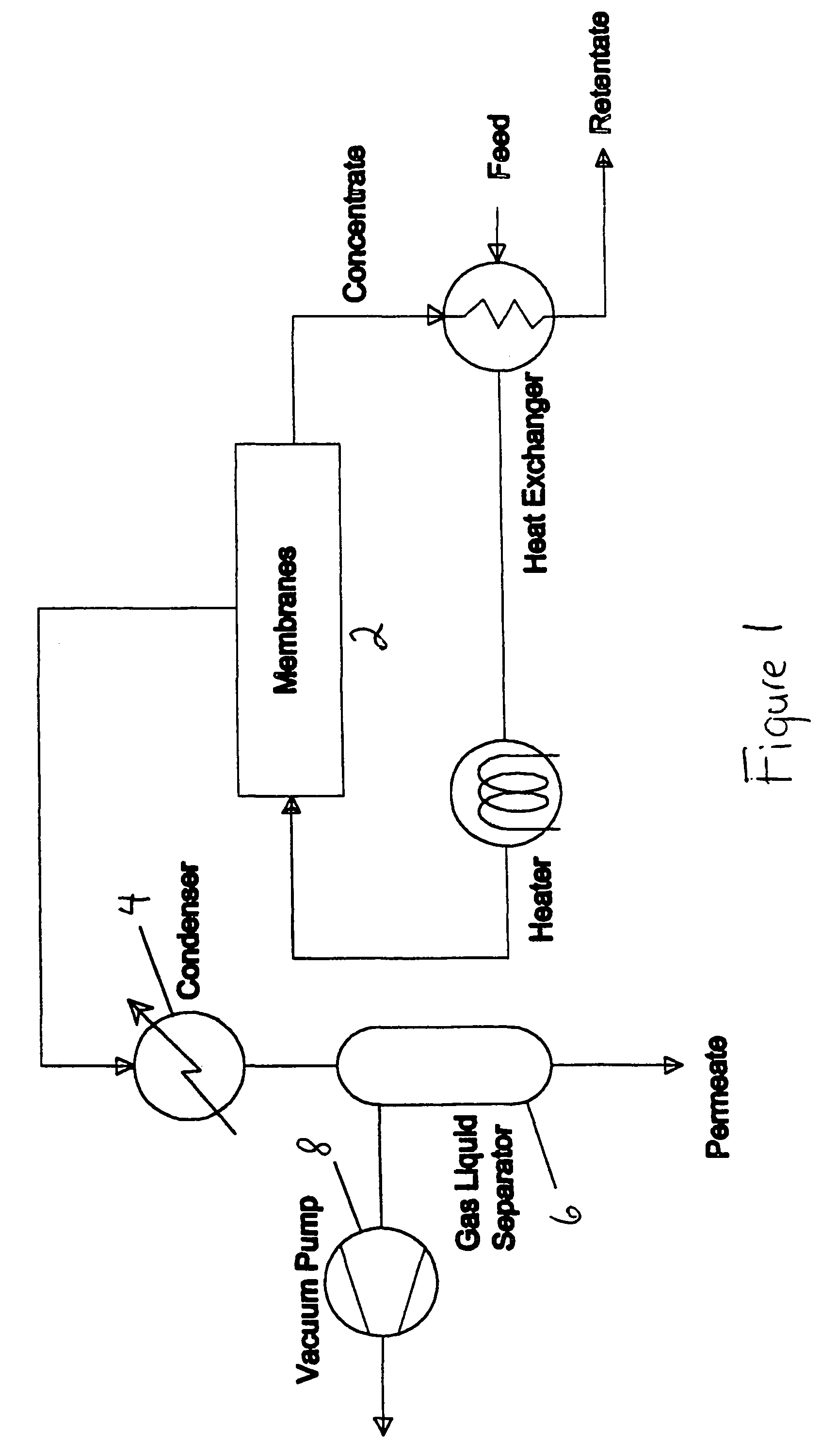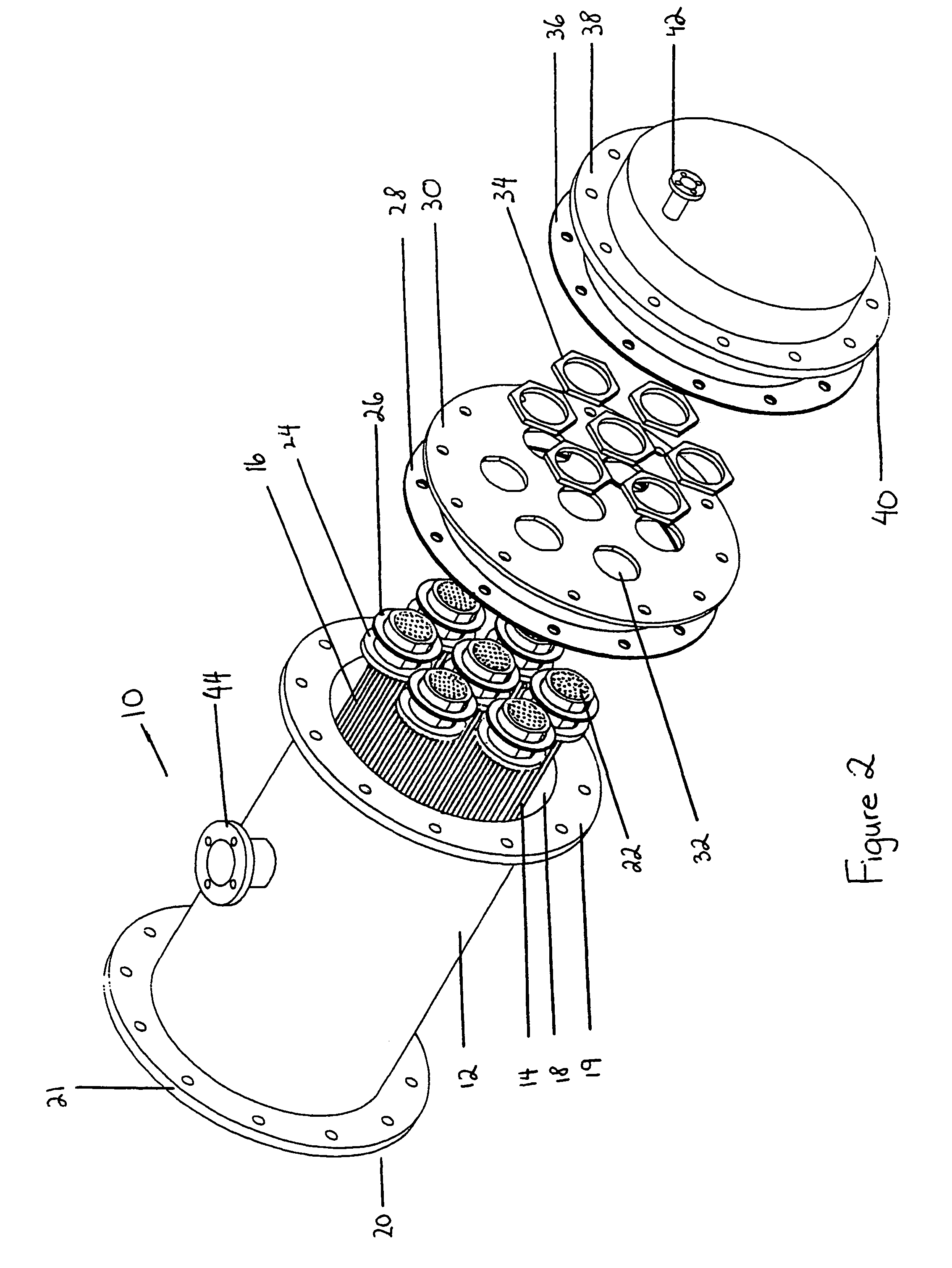Membrane-assisted fluid separation apparatus and method
a technology of membrane-assisted fluid separation and membrane, which is applied in the direction of membranes, filtration separation, separation processes, etc., can solve the problems of contaminating the permeate extracted from the hollow interior of the membrane, reducing the efficiency of the entire module, so as to reduce the extensive plumbing apparatus for removing the permeate from the module, the effect of easy disassembly and replacemen
- Summary
- Abstract
- Description
- Claims
- Application Information
AI Technical Summary
Benefits of technology
Problems solved by technology
Method used
Image
Examples
Embodiment Construction
[0049]The present invention provides a fluid separation module used to separate fluid mixtures into permeate and retentate portions by means of membranes adapted for fluid separation. The fluid separation module may be used to perform any membrane-assisted fluid separation processes including but not limited to, pervaporation, vapour permeation, membrane distillation (both vacuum membrane distillation and direct contact membrane distillation), ultra filtration, microfiltration, nanofiltration, reverse osmosis, membrane stripping and gas separation or a combination of any of these processes.
[0050]FIG. 2 illustrates a first preferred embodiment of the fluid separation apparatus 10 of the invention. The apparatus 10 comprises a hollow housing 12 that contains within the lumen of the housing 12, a plurality of elongate hollow fiber membranes 14 which are grouped in at least one bundle 16. Preferably, the housing 12 will contain a plurality of bundles of hollow fiber membranes 16. The bu...
PUM
| Property | Measurement | Unit |
|---|---|---|
| length | aaaaa | aaaaa |
| length | aaaaa | aaaaa |
| length | aaaaa | aaaaa |
Abstract
Description
Claims
Application Information
 Login to View More
Login to View More - R&D
- Intellectual Property
- Life Sciences
- Materials
- Tech Scout
- Unparalleled Data Quality
- Higher Quality Content
- 60% Fewer Hallucinations
Browse by: Latest US Patents, China's latest patents, Technical Efficacy Thesaurus, Application Domain, Technology Topic, Popular Technical Reports.
© 2025 PatSnap. All rights reserved.Legal|Privacy policy|Modern Slavery Act Transparency Statement|Sitemap|About US| Contact US: help@patsnap.com



